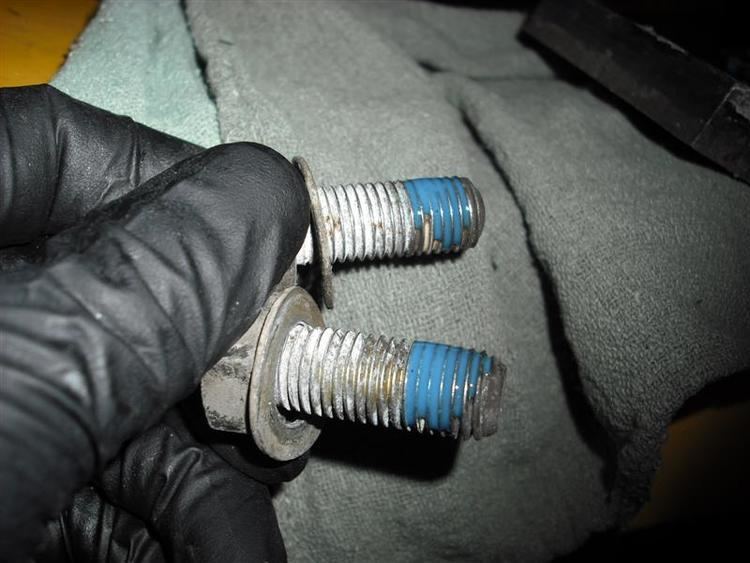 | ||
Thread-locking fluid or threadlocker is a thin, single-component adhesive, applied to the threads of fasteners such as screws and bolts to prevent loosening, leakage, and corrosion.
Contents
Most thread-locking formulas are methacrylate-based and rely on the electrochemical activity of a metal substrate to cause polymerization of the fluid. Thread-locking fluid is thixotropic, which allows it to flow well over time, yet still resist shocks and vibrations. It can be permanent or removable; in the latter case, it can be removed with heat, for example. Typically, brands are color-coded to indicate strength and whether they can be removed.
History
Thread-locking fluid was developed by American professor Vernon K. Krieble in 1953. His company, American Sealants, founded the Loctite brand. An early version of the compound was patented in 1960.
Properties
Typically, thread-locking fluids are methacrylate-based, and cure anaerobically. Thread-locking fluid is a thixotropic fluid: under shear stress, it exhibits a time-dependent decrease in viscosity. This allows it to flow well over time, yet still resist short-duration shearing, as in vibration or shock.
Thread-locking fluid is typically sold in small containers, in amounts from 5 millilitres (about one teaspoon) to 250 millilitres (8.5 US fl oz). Threadlocker is also sold in sticks and in tape form, similar to Teflon tape.
Application and care
Thread-locking fluid may be applied before or after assembly, depending on the type. Threadlockers are available in "permanent" and "removable" formulas, with heavy-duty permanent threadlockers rated to withstand as much as 3,000 psi (21 MPa) in shear. Some threadlockers are removable with the application of heat. Many brands use color-coded labeling to indicate each type's strength and whether it is permanent or removable.
Because thread locking adhesives typically rely on the electrochemical activity of a metal substrate to form a bond, substrates often require thorough cleaning, and in the case of less electrochemically active metals such as aluminium, priming.
Lock washers, locknuts, jam nuts, and safety wire may be used in conjunction with thread-locking fluid to prevent loosening of bolted joints.
Because electrochemical activity is one of the two triggers that cause polymerization of the threadlocker fluid, care must be taken to avoid contaminating the entire container of threadlocker with threadlocker that has had contact with metal, otherwise the material in the container may polymerize.
